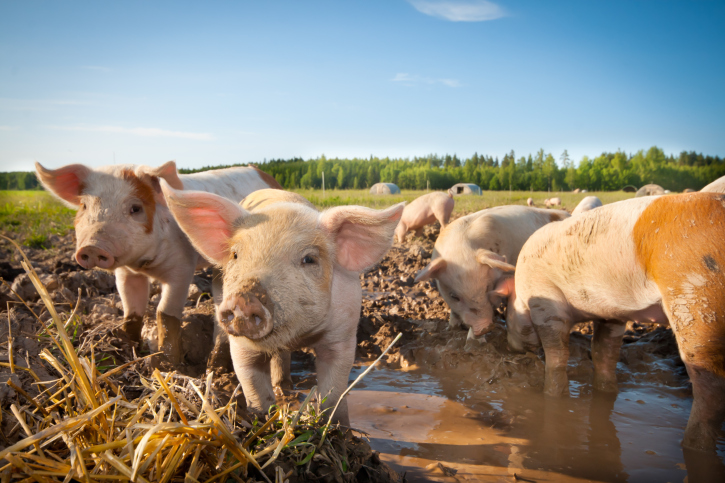
PEDv is an acronym for Porcine Epidemic Diarrhea virus, and the disease has made its way to the United States for the first time. It is believed that the infection originated from hogs imported from China, but the transmission method is so far unknown. Analysts at Rabobank predict a shortfall of 11% in 2014 hog production, with production down by as much as 15% to 25% in the months of August, September and October.
At the end of March, the number of hogs was down 3% year-over-year, and margins could reach the unheard of level of $60 per head, according to Rabobank research. Pork exports also rose 4.5% in February.
The USDA suggests that demand for pork products is higher among consumers due to the high prices for beef. Very high beef prices are turning consumers to pork, pushing the prices of bacon, ham and other products higher as well.
Poultry purchases are also rising, because prices for these products have remained flat-to-lower than they were a year ago. But these relative bargains are not expected to last either. Rabobank believes that chicken prices and margins will rise this spring and summer and that production needs to rise 8% to 9% to meet expected demand.
The bottom line is that meat of all kinds is set to take a bigger bite out of a household’s income.
ALSO READ: U.S. Consumers Continue to Pay More for Milk and Beef
Cash Back Credit Cards Have Never Been This Good
Credit card companies are at war, handing out free rewards and benefits to win the best customers. A good cash back card can be worth thousands of dollars a year in free money, not to mention other perks like travel, insurance, and access to fancy lounges. See our top picks for the best credit cards today. You won’t want to miss some of these offers.
Flywheel Publishing has partnered with CardRatings for our coverage of credit card products. Flywheel Publishing and CardRatings may receive a commission from card issuers.
Thank you for reading! Have some feedback for us?
Contact the 24/7 Wall St. editorial team.




